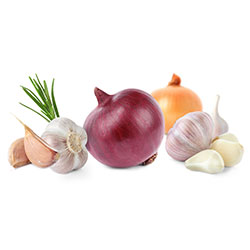Vegetables

Stalk or Bulb
stalk Part of the fennel growing out of the bulb and bearing small feathery dark-green leaves; it is traditionally used to flavor fish dishes. Bulb Fleshy edible part of the fennel, composed of the overlapping enlarged parts at the base of the stems.

Tuber
Tubers are enlarged structures in some plant species used as storage organs for nutrients. They are used for the plant's perennation (survival of the winter or dry months), to provide energy and nutrients for regrowth during the next growing season, Stem tubers form from thickened rhizomes (underground stems) or stolons (horizontal connections between organisms). Common plant species with stem tubers include potato and yam. Some sources also treat modified lateral roots (root tubers) under the definition; these are encountered in sweet potato, cassava, and dahlia.